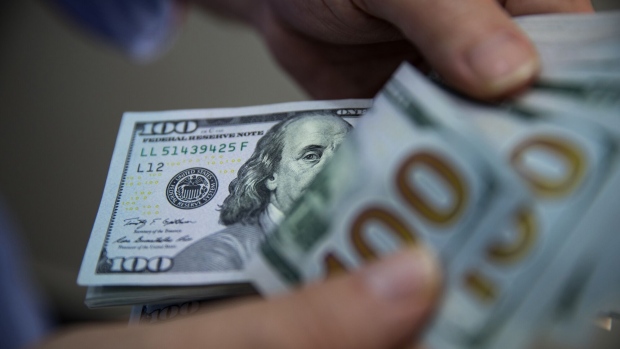Mar 13, 2023
Federal Home Loan Banks to Raise $64 Billion in Notes Offering
, Bloomberg News

(Bloomberg) -- The US system of Federal Home Loan Banks is ramping up the amount of cash it has available to deploy as the failure of several US lenders — including Silicon Valley Bank and Signature Bank — stokes expectations that more regional lenders will need to tap it for funds.
The FHLB system, a key source of cash for regional lenders, raised $88.7 billion through the sale of short-term notes, according to people with knowledge of the matter, more than the $64 billion initially planned.
“This isn’t the normal size for sure but likely reflects bank funding needs given the backdrop,” said Ian Burdette, head of term rates trading at Academy Securities. “I don’t think they’d be doing what they’re doing if there wasn’t real bank demand.”
The system of 11 regional banks is a Depression-era backstop that private banks can use for short-term funding without the stigma of taking money from the Federal Reserve. It’s widely seen as a safety net and has been called the “lender of next-to-last resort” — a play on the nickname for the Fed’s famed discount window.
The five-part offering of floating-rate notes was led by Barclays Plc, Nomura Holdings Inc., Wells Fargo & Co. and Citigroup Inc.
Typically these short-term agency trades are sold via reverse inquiry, meaning customers would go to the website and put their order through and get some or part of their request filled. But because of the size of this deal, a syndicate group was formed to appeal to a wider investor base.
The bond sale signals that banks will likely continue tapping their lines with the FHLB system this week after Silicon Valley Bank on Friday became the biggest US bank collapse since the 2008 financial crisis. Venture capital firms and individuals rushed to get their money out of the California-based institution late last week, setting off one of the largest bank runs in a decade and hitting a wide variety of businesses, from startups to vineyard owners.
As a result, regional banks’ stocks plummeted on Friday and continued dropping Monday as investors tried to reduce exposure to the industry.
The rapid selloff comes as the Treasury Department, Federal Reserve and Federal Deposit Insurance Corp. said they were introducing a new backstop for banks that would be large enough to protect the entire nation’s deposits. Investors poured money into safe assets like US Treasuries and gold on Monday, and a series of companies scrapped their plans to sell high-grade corporate bonds.
Academy’s Burdette said before the pricing that banks may be opting to tap the FHLBs because it’s “the path of least resistance” given the newness of the Fed’s Bank Term Funding Program.
--With assistance from Austin Weinstein.
(Updates to show deal has priced.)
©2023 Bloomberg L.P.






